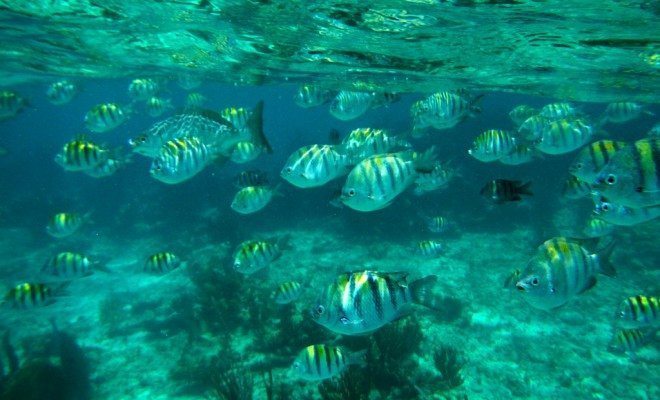 Image courtesy of [jjjj56cp via Flickr]
Image courtesy of [jjjj56cp via Flickr]
Energy and Environment
Part of the Pacific is Being Legally Protected; Here’s Why It’s Important
British Prime Minister David Cameron has announced that a large swath of the Pacific Ocean in British territory will be delineated for protection. Focusing around the Pitcairn Islands in the center of the South Pacific, this reserve will be larger than California and represents a very momentous step forward in conservation.

Beneath the unassuming Pitcairn Island lies an aquatic wonderland. Courtesy of Fotorus via Flickr.
The marine habitat in this region is a thriving and delicate ecosystem. Due to its remoteness, human impact has been minimal; scientists are under the impression that there exist here a substantial number of species yet to be discovered. Furthermore, there are coral reefs, submerged mountains, and water quality of a cleanliness difficult to match elsewhere on Earth.
Prior to the designation as a reserve, threats to the health of the place loomed as illegal fishing activity has been drawing near in recent years. Seafloor mining is also now out of the equation. Old fashioned, low-scale fishing by the 60 or so residents of Pitcairn Island itself, most widely known as the settlement site of the mutineers in Mutiny on the Bounty, will be permitted.
So why is protecting this region such a big deal? First of all, for the sake of the locals and for the British government, the pristine, beautiful region is now guaranteed to remain so, and tourism is expected to increase. The Pitcairn Island is so remote that it is not often that people venture down there. In fact, National Geographic Explorer Enric Sala pointed out that between boats and planes it takes most people longer to arrive there than at the Moon. But applying this protective title increases its appeal. Furthermore, the loss of about $30,000 per year in fishing licenses would be easily recovered by tourist revenue and the benefits of being designated an Exclusive Economic Zone.

The Palmyra Atoll in the Central Pacific. Courtesy of USFWS-Pacific Region/Jim Maragos via Flickr.
Anything that can be done to preserve the health of an ecosystem is desirable. Just because the region around the Pitcairn Island is remote does not mean that any damage it might suffer would not affect other areas on the planet. We have already seen how human beings themselves, in addition to both aquatic and land-bound biodiversity, face threats from accumulating plastic in the oceans. A complex chain of relationships means that even a slight disturbance can cover large geographic and biological distances.
It is more difficult to think of a distant and highly inaccessible portion of the ocean as needing protection from humans, or as being vulnerable to human activity, as it is to regard portions of the land such as rainforests or mountain ranges as such. While we more easily and often see the consequences of our actions on land, we are more detached from the oceans and conditions in the water, both geographically and mentally. For this former reason, the last century has seen the creation of a wealth of national parks, UNESCO biosphere reserves, and vocal conservation organizations. These policies have done many great things to advocate for the health of the land, but only just recently have these motivations extended to the seas.
Marine reserves are oceanic equivalents of national parks. They are protected areas, encourage people to come see their beauty, and make statements as to the importance of our environments. The new Pitcairn reserve represents one of the largest manifestations of that sentiment, spreading environmental awareness and conservation to the farthest corners, yet equally interconnected, portions of the globe.








Comments